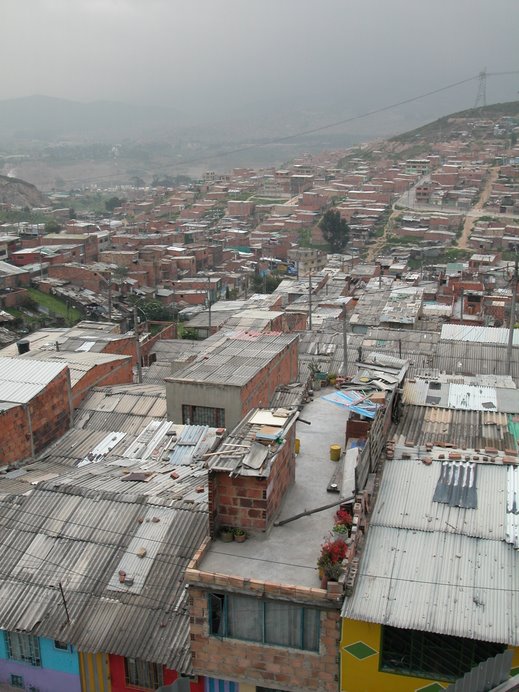 |
| Rodrigo Arenas Betancourt at work. (Photo: Colartes) |
But Arenas, who lived from 1919 to 1995, also made one sculpture paying tribute to one of the worst people Colombia has produced: narcotrafficker Pablo Escobar. Now, Colombia may have to decide what to about an artwork which represents the intersection of wealth, crime, art and even sexuality.
The sculpture, called La Familia hangs on a wall of Escobar's El Monaco apartment building in Medellin. It isn't one of the artist's most distinguished works: It portrays sexualized figures standing one atop another, the woman a stereotypicaly voluptuous narcotrafficker's fantasy.
Medellin now plans to demolish the Monaco building in an
effort to change its narco-city image. That's a questionable policy in an era when historical memory is gaining importance. After all, the narcos' extravagant lifestyle demonstrates what happens when a sought-after commodity is prohibited: It makes vicious criminals rich.
 |
| La Familia, on a wall of the El Monaco building in Medellin. |
But what about art created as a tribute to a vicious criminal?
There's no word about why Arenas created the work for Escobar. Did he fear him? Did he admire the man's criminal accomplishments, or his pretentions of nationalist politics? Or did Betancourt just need the money?
According to news reports, Arenas' sculpture may go to Medellin's 'Museo de la Memoria,' which is to commemorate the victims of Medellin's violence. But that hardly seems like an appropriate abode for an eroticized tribute to a mass murderer.
 |
| Prometheuus Unchained, in the Casa del Museo de Antioquia. |
By Mike Ceaser, of Bogotá Bike Tours























































